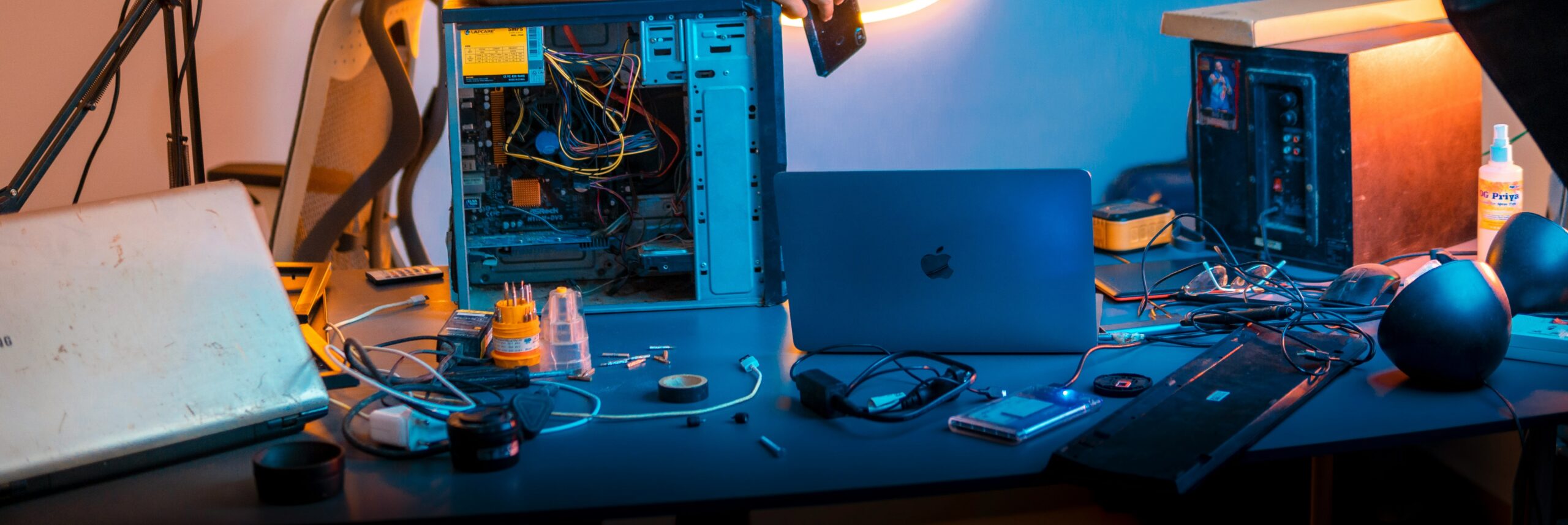Computers are essential tools for work, entertainment, and communication, but hardware issues can disrupt productivity and cause frustration. Understanding common hardware problems and their solutions can save time and money. Here are the top 10 computer hardware issues and how to fix them.
1. The computer won’t turn on
Possible causes:
✅ Faulty power supply
✅ Dead CMOS battery
✅ Loose power cable
✅ Damaged motherboard
How to fix it:
✔ Check if the power cable is properly connected.
✔ Test the power outlet with another device.
✔ Try a different power cable or adapter.
✔ If the PSU (Power Supply Unit) is faulty, replace it.
✔ If the motherboard is damaged, seek professional repair.
2. Overheating
Possible causes:
✅ Dust-clogged fans
✅ Failed thermal paste
✅ Poor ventilation
✅ Faulty cooling system
How to fix it:
✔ Clean dust from fans and vents using compressed air.
✔ Reapply thermal paste on the CPU/GPU.
✔ Ensure proper airflow inside the case.
✔ Replace a malfunctioning CPU cooler or fan.
3. Blue screen of death (BSOD)
Possible causes:
✅ Faulty RAM
✅ Driver conflicts
✅ Overheating
✅ Hard drive failure
How to fix it:
✔ Run Windows Memory Diagnostic to check RAM.
✔ Update or roll back drivers.
✔ Check hard drive health using CHKDSK or CrystalDiskInfo.
✔ Monitor CPU/GPU temperatures.
4. Noisy hard drive or SSD issues
Possible causes:
✅ Failing hard drive (clicking sounds)
✅ Loose mounting screws
✅ SSD corruption
How to fix it:
✔ Backup data immediately if the HDD is failing.
✔ Replace the hard drive if it shows signs of failure.
✔ For SSDs, run S.M.A.R.T. diagnostics.
✔ Secure loose screws in the drive bay.
5. RAM failure
Possible causes:
✅ Loose RAM sticks
✅ Incompatible RAM
✅ Defective memory modules
How to fix it:
✔ Reseat RAM sticks in their slots.
✔ Test each RAM stick individually.
✔ Replace faulty RAM modules.
6. GPU Problems (Display issues, artifacts)
Possible causes:
✅ Overheating GPU
✅ Outdated drivers
✅ Failing graphics card
How to fix it:
✔ Clean GPU fans and heatsinks.
✔ Update graphics drivers.
✔ Test the GPU in another system to confirm failure.
✔ Replace the GPU if necessary.
7. USB ports not working
Possible causes:
✅ Disabled in BIOS
✅ Driver issues
✅ Physical damage
How to fix it:
✔ Restart the computer and check BIOS settings.
✔ Update USB drivers.
✔ Try different USB ports.
✔ If ports are physically damaged, replace the motherboard or use a USB hub.
8. Motherboard failure
Possible causes:
✅ Short circuits
✅ Failed capacitors
✅ BIOS corruption
How to fix it:
✔ Check for visible damage (bulging capacitors).
✔ Reset CMOS battery.
✔ If the motherboard is dead, replace it.
9. Keyboard & mouse not responding
Possible causes:
✅ Loose connections
✅ Driver issues
✅ USB/PS2 port failure
How to fix it:
✔ Reconnect the keyboard/mouse.
✔ Try a different USB port.
✔ Update or reinstall drivers.
✔ Test with another keyboard/mouse.
10. Slow performance
Possible causes:
✅ Insufficient RAM
✅ Failing hard drive
✅ Overheating CPU/GPU
How to fix it:
✔ Upgrade RAM if needed.
✔ Replace HDD with SSD for faster performance.
✔ Clean cooling systems and reapply thermal paste.
Conclusion: Many hardware issues can be fixed with basic troubleshooting, but some may require professional help or replacement parts. Regular maintenance—such as cleaning dust, updating drivers, and monitoring temperatures—can prevent many common problems. If you’ve tried these fixes and the issue persists, consult a professional technician for further diagnosis.
Did you find this guide helpful? Let us know in the comments!
